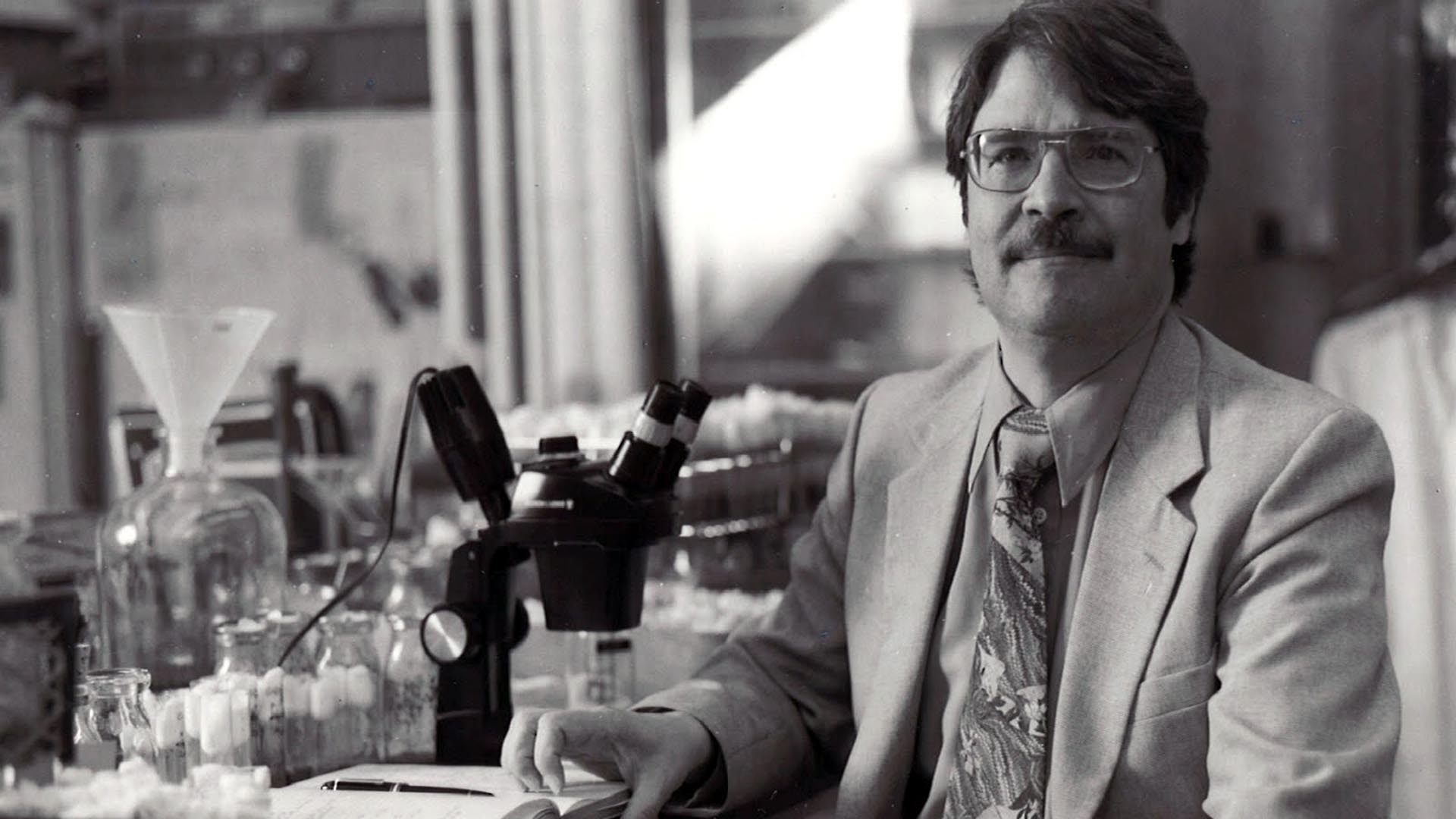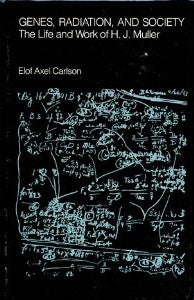The Elof Carlson Collection has proved to be the most educational and enlightening material I have worked with so far as Project Archivist for the NHPRC Basic Processing Grant. The breadth and scope of the collection range from weighty scientific research to humorous essays on modern society. Dr. Elof Axel Carlson is a professor, geneticist, and a historian of genetics.
He received his A.B. in 1953 from New York University and his Ph.D. in 1958 from Indiana University where he studied under Nobelist Hermann J. Muller. Later he was employed a lecturer in the Biology Department at Queens University, Canada and then both Assistant and Associate Professor in the Department of Zoology, University of California, Los Angeles. In 1968, he joined the Biology Department of the State University of New York at Stony Brook as a full professor, later becoming Distinguished Teaching Professor in 1974. He retired from Stony Brook to become a full-time writer in 2000.
A significant portion of the EAC Collection consists of material created and collected while writing the biography of his mentor: Genes, Radiation, and Society: The Life and Work of H. J. Muller. As such, the collection has been divided into two record groups:
I. The Elof A. Carlson Papers, which includes his correspondence, research files, laboratory notebooks, manuscripts, reprints, clippings, photographs, and any other material that is unrelated to his Muller research.
II. Muller Biography Material: Genes, Radiation and Society, which consists of material collected or created while conducting research for Carlson’s seminal biography of Hermann Muller. Dr. Carlson received materials from Dorothea Muller (the second wife of H.J. Muller), as well as from assorted colleagues of HJM.
Additionally, the EAC Collection is closely related to the Hermann J. Muller Collections at the CSHL Archives. The Muller collections at Cold Spring Harbor include an additional set of Muller research material collected by Carlson while working on his biography, as well as a set of primary documents donated by Muller’s son, David. The David Muller Collection of Hermann J. Muller Papers includes correspondence saved by David Muller’s mother (Hermann’s first wife), Jessie Marie Jacobs Muller Offermann.
Elof and Hermann
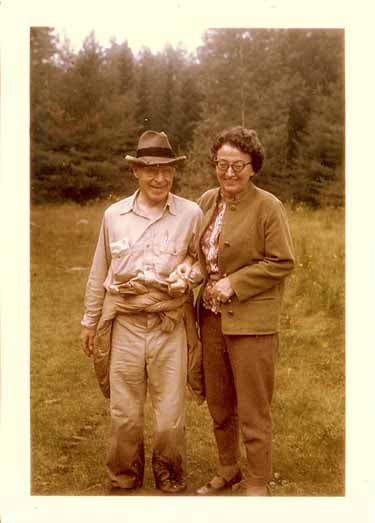 Elof Carlson’s Research on Hermann J. Muller can be divided into the following two sections: drafts of the manuscript and research files. The drafts of the manuscript include a long sheet galley proof and oversized drafts, both with handwritten edits. Additionally, there is a collection of reviews of the book, as well as an indexed guide to the manuscript. Dr. Carlson clearly enjoyed a close relationship with his mentor, Dr. Hermann J. Muller, as evidenced by the scope of personal material supplied both by Muller and his second wife, Dorothea.
Elof Carlson’s Research on Hermann J. Muller can be divided into the following two sections: drafts of the manuscript and research files. The drafts of the manuscript include a long sheet galley proof and oversized drafts, both with handwritten edits. Additionally, there is a collection of reviews of the book, as well as an indexed guide to the manuscript. Dr. Carlson clearly enjoyed a close relationship with his mentor, Dr. Hermann J. Muller, as evidenced by the scope of personal material supplied both by Muller and his second wife, Dorothea.
The research file section of this record group arrived in labeled folders from Dr. Carlson. Highlights include:
- Teacher’s Guide to the H.J. Muller Exhibit
- Notes on Lectures given about HJM and the book
- EAC handwritten research notes for book
- EAC notes and drafts for HJM obituary
The files include a large series of letters between Carlson and Thea Muller. Because the correspondence between the two is so extensive, it encompasses several folders which appear to have been compiled under different auspices.
Elof Carlson: Renaissance Man
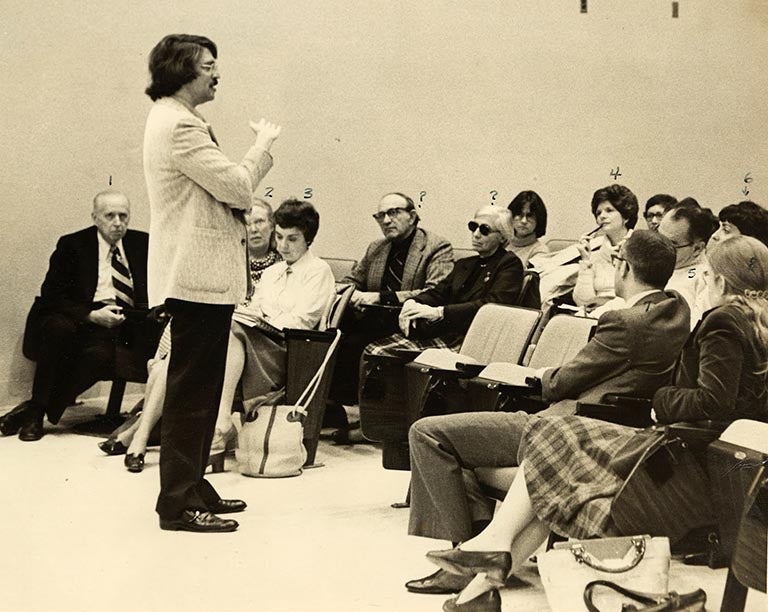
The Elof A. Carlson Papers span Dr. Carlson’s career from his first teaching post at Queens University, Canada through his retirement and second career as a writer. As the bulk of Dr. Carlson’s career was spent at the State University of New York at Stony Brook (Stony Brook, NY on Long Island), the majority of documents reference his life at work at and around that institution. Carlson hand-wrote a significant portion of his work and when donating his papers he was kind enough to include a guide to deciphering his handwriting. He was a habitual doodler and very skilled amateur artist. Many of his academic writings contain hand drawn illustrations. He also authored poetry and plays.
The first major group of papers are in the collection the Teaching Files, which are labeled by course. Titles include “Fall 1969 Biology 101”, “Spring 1974 Biology 1974”, and “Fall Biology 1975”. Many are handwritten and some are on oversized index cards.
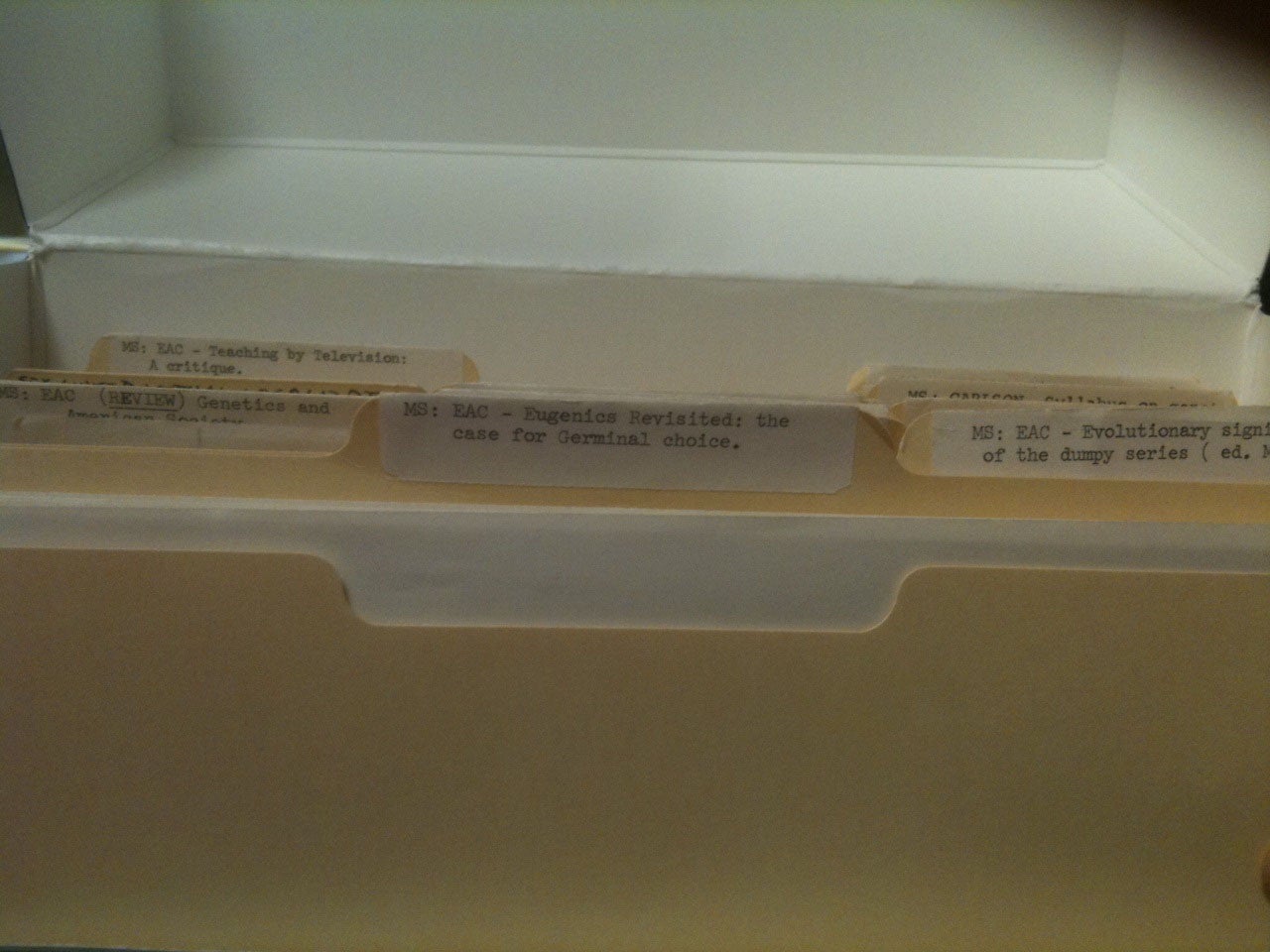
Next, are Carlson’s Research Files, which also arrived organized in labeled folders, alphabetical by person or subject. The files contain photographs, manuscripts, and correspondence spanning 1967-1989. The major themes covered include birth defects, genetic history, mutations, drosophilia, Mendelian inheritance, and eugenics.
The collection continues with Carlson’s non-Muller manuscripts. He authored textbooks for Stony Brook and the general biology industry and also wrote books for the general public. The CSHL Library has a complete set of his published books. As Dr. Carlson is a prolific writer, his articles, essays, and papers are interspersed throughout his collection, often filed under the subject of the paper. There is an extensive reprint collection of his published articles as well. The gem of this section is Medical Genetics Rounds, Seminars and Library Notes which is a handwritten manuscript with Dr. Carlson’s illustrations.
Elof Carlson: A Man of the People
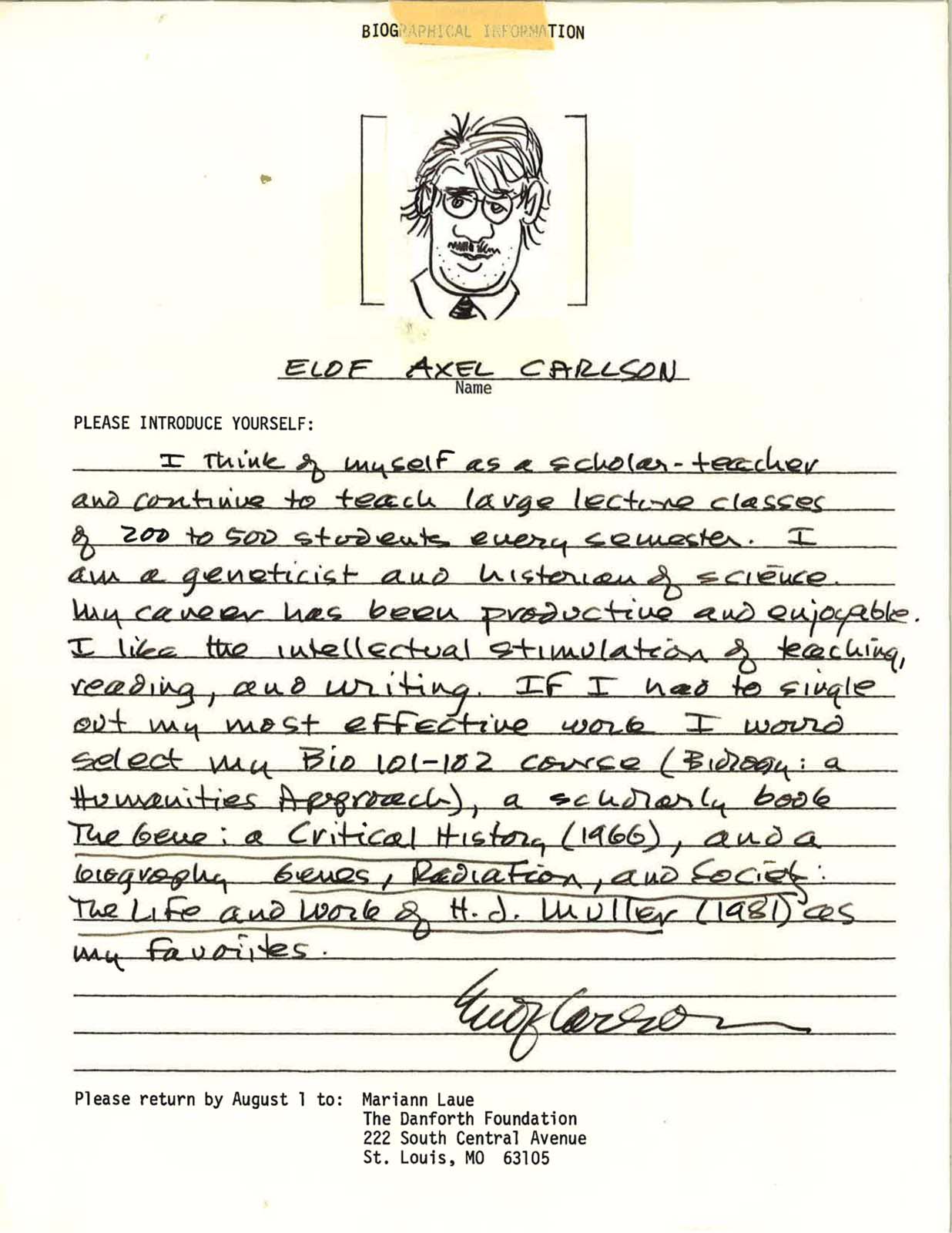
One of Carlson’s fundamental beliefs was that biology should be taught to, and understood by, the average person so that they may make informed decisions about their life. He noted that today’s society is increasingly complex, where a person may be adamantly against the death penalty and anti-war but may approve of genetic testing and abortion. With this in mind, much of his lay writing explores biology in terms that are easy to understand and with themes that are relevant to the general public. He wrote a series of articles for the Southampton News that draws on the life sciences to help explain controversies such as genetic counseling, eugenics, elective abortion, intelligence testing, racism, racial mixing, the induction of cancers, smoking and health, radiation hazards, sperm banks, cloning and so-called “test-tube babies.”
We make our decisions with incomplete knowledge. The principles which explain why a dividing cell dies when its chromosome is broken, do not tell us what values to choose. But deciding about the safety of nuclear reactors, dental x-rays, diagnostic medical x-rays, and the testing of nuclear weapons is very much dependent on that biological knowledge… unless science is taught in a human context that strikes right into our bodies, our family, our awareness, we leave it for science-mavens to lap up.
Elof Carlson: A kindred spirit of Samuel Pepys
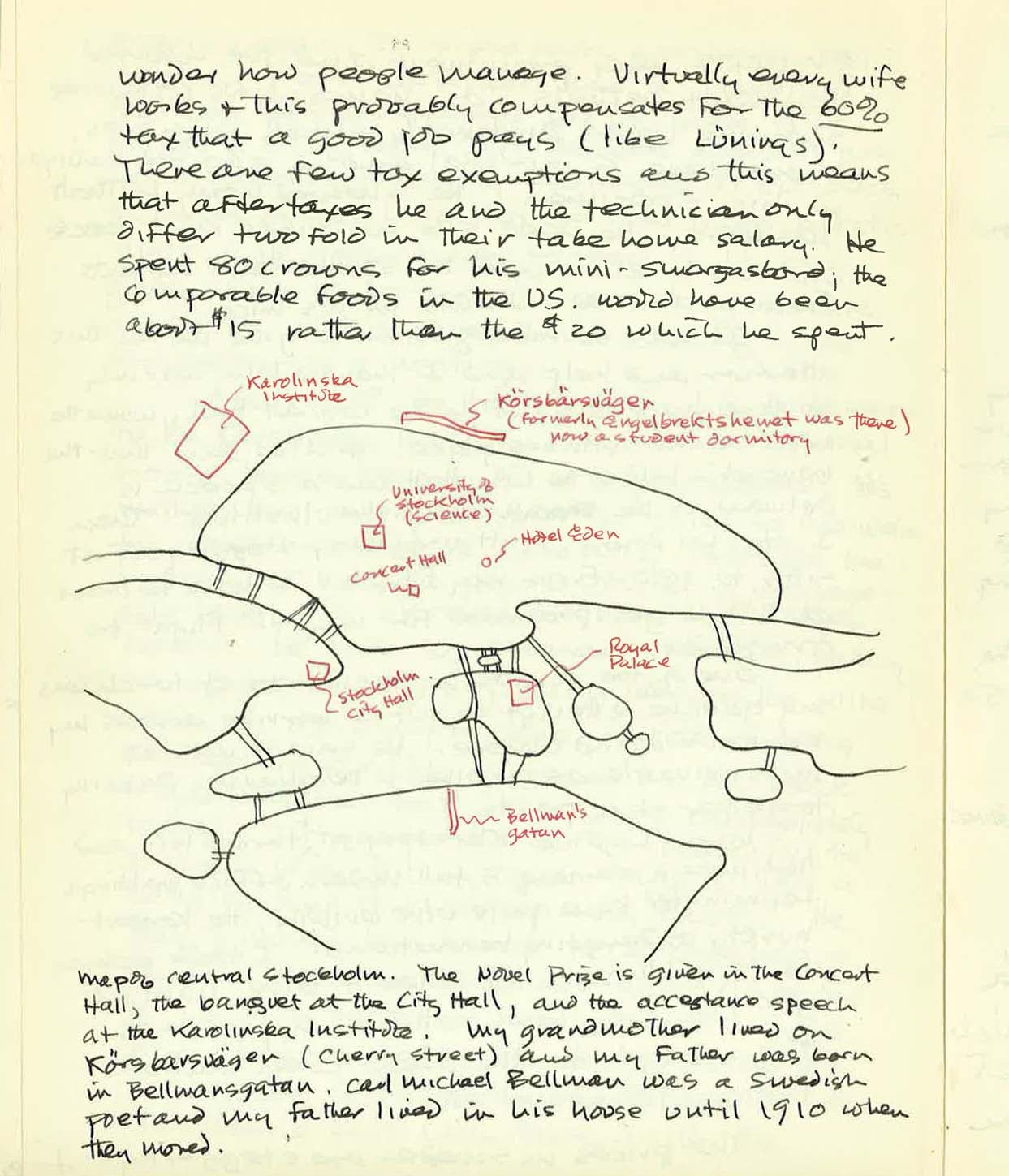 Carlson’s collection concludes with his personal diaries from 1963-1997, most of which were indexed with illustrations. The diaries document both his personal and professional lives. Additionally, Carlson has indicated he has another 300 indexed volumes which he will donate to the CSHL Archives which contain important information on the history of SUNY, Stony Brook.
Carlson’s collection concludes with his personal diaries from 1963-1997, most of which were indexed with illustrations. The diaries document both his personal and professional lives. Additionally, Carlson has indicated he has another 300 indexed volumes which he will donate to the CSHL Archives which contain important information on the history of SUNY, Stony Brook.
The image is a page from Carlson’s diary entitled “Journal Abroad 17 February 1973-28 February 1973” and includes a hand-drawn map of central Stockholm. Although this diary focuses on his European sojourn, it is peppered with scientific observations and drawings.
Overall, the EAC Collection provides insight into Carlson not only as a scientist, but also as a teacher, author, historian, and public spokesman. Researchers interested in Hermann Muller and scientific ethics in the 20th century will find a wealth of information in the papers of Elof A. Carlson.
